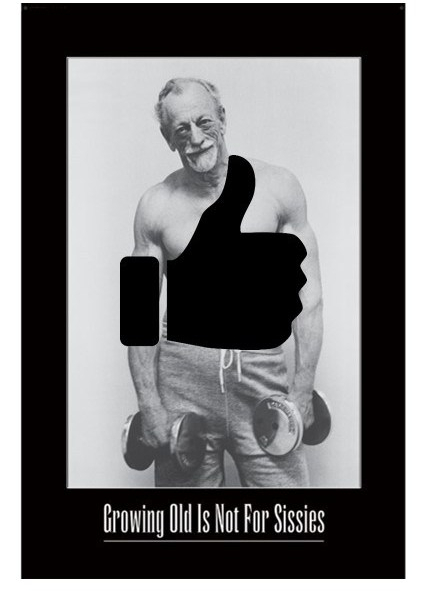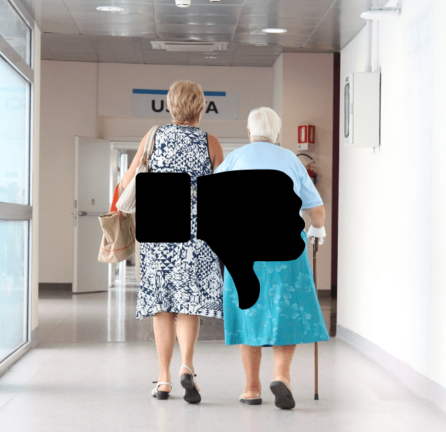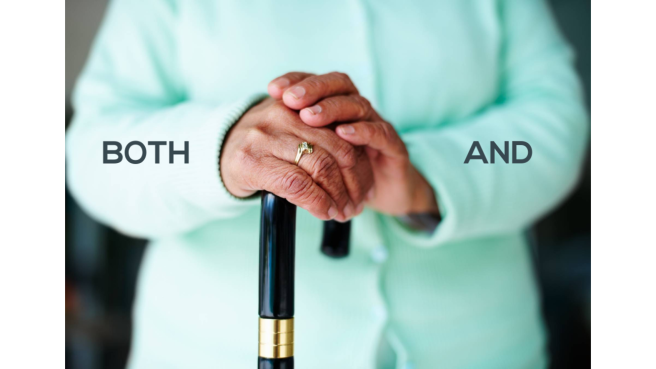I am reading Mary Pipher’s book, Women Rowing North: Navigating Life’s Currents and Flourishing as We Age. She says,
“For many of us, a combination of suffering and happiness is what defines this life stage and fuels our growth – we can describe ourselves as living in both/and terms.”
I so love that.
Last week in my Psychology of Aging class we had a spirited discussion on this very topic. A student brought up her frustration that when she hears discussions about abolishing ageism, she notices that there seems to be a need to hyper-promote the idea that “aging is positive”. She said what she doesn’t hear in these discussions is a “more balanced, holistic” view of aging. She laments that she feels like it is selling a version of growing older that is not authentic, at least not for everyone. She gets that there are gifts and wisdom, and all that jazz, she says. But that is not all what aging is.
It is both/and.

As I am engaged in this discussion, I think about another conversation I have heard lately that reflects this struggle with both/and.
I read a social media comment in which the author expressed frustration with intergenerational programs in which children visit people in nursing homes. Her point was that this resulted in children having a poor image of growing older, perhaps even contributing to stereotyping older people, i.e. ageism. She suggested that children should be exposed to other examples of growing older, not “frail” people in nursing homes.
Certainly, children should be with all sorts of older people. And not just children, by the way. It is important that people of all ages see that there is no single story to the experience of growing older.
Yet, I couldn’t stop thinking about the message that is behind this. That living in a nursing home or living with dementia = bad aging/negative aging/failing. That these individuals somehow should not have a place in the story we tell about the experience of growing older.
I worry about this.
This comment reflects the story of living in a nursing home or living with dementia as primarily a story of loss, negativity, decline. Why is that the story? It does not need to be. One can live in a nursing home or live with dementia and have a story of growth too.
It is both/and.
The reason we promote positive aspects of growing older is to balance the prevailing negative perceptions of it. These negative perceptions are at the root of ageism, and develop into stereotypes that are generalized to older people, and result in us not seeing people who are growing older for their whole, individual selves. One way we have tried to eradicate ageism is to try to paint a different picture of growing older. This might be older people who are running marathons, practicing medicine into their 90s, writing books well into their 80s. All wonderful examples of the possibilities of growing older. Sometimes, in the spirit of presenting a more “positive” view of growing older, we bring up the point that people living with dementia or in nursing homes are “not the norm”, i.e. “that probably won’t happen to you, that happens to other people!”.
So here is where I get worried.
Have we created a situation in which we have attached value to the experience of growing older, as being “good” or “bad”, or “positive” or “negative”?
So that the 80-year weightlifter or 90-year old doctor is “good aging”?

And the person living in a nursing home, or living with dementia, or experiencing health challenges, is “bad aging”?

We want to abolish ageism by dispelling the notion that not all people are sick and frail as they grow older, yet we cannot do this at the expense of downgrading people who are living with illness and disability as they grow older.
Anti-ageism is not about good aging or bad aging. It is about promoting the idea that aging is a multidimensional, individual experience. It is encouraging to see people as they grow older for all that they are.
We need to change the story of growing older so that it is not driven by decline. But we also need to acknowledge that people who are growing older do become ill, do develop dementia, do live in nursing homes. And they are not out of the game. We put them out of the game.
Isn’t it ageist to not include older people who are living with dementia and living in nursing homes in the story we want to create, assumedly because they are not the story of aging we “should” tell about “positive” aging? By virtue of trying to present a positive view of aging, and pointing out that most people do not get dementia, or most people do not live in nursing homes, this can diminish these lives, and not allow them the space to present their lives as positive as well as negative.
People living in nursing homes or living with dementia also could be part of a more balanced story of growing older, one that says that despite physical and cognitive changes as one grows older, they are still growing, they are still living well. Loss and change are real. But they are not the whole story. They are a piece of a story, of which a person is the whole story. And each story is different.
Not talking in a balanced way about growing older might also tread into dangerous territory of a denial of aging.

If we only think about growing older as being about eternal youth, and with that all the things that we associate with youth, we are saying that growing older is “bad”, something to be avoided.
These recent voices have made me consider a question.
Why do we need to talk about growing older in “positive” and “negative” terms?
It is both/and.
Perhaps this is motivation for us to think even more deeply about how we do want to talk about growing older or growing with dementia.
I would like to challenge us to take this a step further. Let’s talk about the experience of growing older, or growing with dementia, as MORE than good or bad, or positive or negative.
Rather than polarizing aging as..
living in nursing home or having dementia = bad, and
not having dementia/not living in a nursing home = good,
…can we find a way of telling the story of growing older so that each person is valid, and their worth is not qualified by their health, disability, or address?
How else can we talk about ageism and how we need to change our culture of aging?
What would happen if we put less emphasis on physical and cognitive changes as we tell the story of growing older?
What if there were other ways in which we talked about what growing older means?
What if we told stories of people with dementia living well, just as much as we told stories of 95 year-old weightlifters and doctors? Those are all beautiful stories; why would we not tell them all?
What if a child visiting a nursing home did not represent him or her seeing decline, but life?
That would be because we saw that the people who live there are full of life, not full of decline. This would be because we focus on growth and possibility for each other as we grow older.
How do we get there? We have to start seeing people who live in nursing homes, who have dementia, who are growing older with physical challenges, as full of life.

Being full of life is not all rainbows and butterflies. It is both/and. Like all of life. It is both loss and gain, struggle and growth. Being full of life is founded on the idea that each person is important, each person can live well, each person deserves a life of meaning and purpose.
When we talk about the experience of growing older, we could include all examples of growing older. We could recognize that the individual lived experience of growing older is unique and different to each person and that the experience of growing older is both good and bad for every individual. Whether you live in a nursing home or you live in a house, you as an individual have a right to be seen as a whole human being as you grow older.
Perhaps the thing that we should be most concerned about transcends health, age, and disability – LIVING with meaning. Even more than the challenges that we face, physically or cognitively, or where we live, or what we achieve, there is this undercurrent of the need for purpose and meaning that is central to all of us. This is a human need that is fundamental to every single person. And although it may evolve and change throughout our lives, it does not go away as we grow older. Whether we are a 95-year old marathoner, or a person living with dementia, or a person living in a nursing home. And what great stories this makes for us to tell about growing older.
Let’s not put up on pedestals one view of growing older as the right way to grow. Aging is both/and. It is a multidimensional experience that is not about being good or bad, or any of these value laden adjectives. Let’s embrace the process of growing older, for all the things that means, with the possibilities that it provides.


So well said, Sonya! I agree with you 100%. it is a message that everyone needs to hear. Let’s do it!
LikeLike
Thanks, loyal reader Cathy! Will be curious to hear what you think about the book.
LikeLike
Great insights, Sonya! I’m reading Women Rowing North right now and hope to start a women’s discussion group about it this fall at Osher Lifelong Learning Institute (OLLI) at Duke . ~ Bev Cowdrick, Durham, NC
LikeLike
Thanks, Bev. I am about 1/4 through, and am curious to hear what others think!
LikeLike
Yes, like everything in life, there is more than one way to look at it-to look at life. Would have loved to hear/see the discussion in class that night.
Thank you for sharing.
LikeLike
Yes, Patti! I am learning so much from students- I love listening to how they see/hear things.
LikeLike
I love when readers share their thoughts with me. This is how we have the conversation! In this spirit, I am sharing these great insights from a friend and colleague, Ginny, in response to Both/And.
#1 Towards Abolishing Ageism: Recognizing Personhood of Each Individual
Old Age is one of many labels that our society uses to marginalize and exclude people as parts of groups of “others”—outside of the mainstream. Some additional categories of “others” are based on: physical and mental/emotional challenges; sexuality; culture; country of origin, race, religion; beliefs; political affiliation; education; socioeconomic status—- and even residence in specific areas of the USA. To varying degrees, each group is marginalized and excluded.
Members of each group are individual human beings or PERSONS who are not visible when viewed through the lens of each category of “otherness”.
Probably the most effective way out of this situation is to recognize each member of any category as an individual person. A first step may be to gain information about the Life Story of each group member a human being, including BOTH the positive AND negative—BOTH the ups and downs as life has progressed and changed.
#2 Towards More Balanced Views of Older Age: Recognizing Our Own Personhood
Maybe our first step towards developing “authentic” views of older age is to focus on our shared condition of being human by thinking about our own lived experience as a developing Person.
Each one of us is able to look back on our own life experiences important to us within each stage (Childhood, Youth, Early Adulthood, etc). We can recognize that these experiences took place within our own multidimensional context of ongoing change and growth at the time, including: physical/psychological/cognitive/ educational/social/environmental/economic/ spiritual +/or religious +/or beliefs + values) etc. We can recognize our own progression as a PERSON—BOTH the positive AND negative—the ups and downs. Gaining a more balanced perspective of our own life may assist us towards more balanced views of old age as a further stage of changes and development.
LikeLike